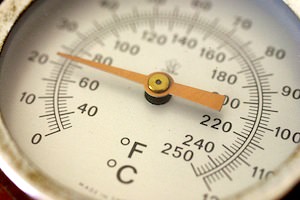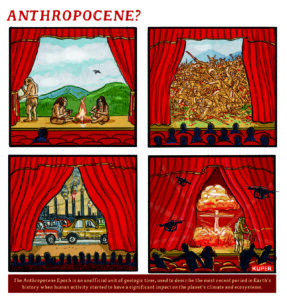2°C Climate Target ‘Is Half What’s Needed’
Swiss scientists say attempts to stop the rise in global average temperature exceeding 2°C over preindustrial levels are far too timid.
By Tim Radford, Climate News NetworkThis piece first appeared at Climate News Network.
LONDON — Governments that agreed to try to restrict global warming to a rise of no more than 2°C may have set themselves the wrong target, according to Swiss scientists.
Marco Steinacher from the University of Bern and colleagues report in Nature that the cuts in carbon dioxide emissions necessary to achieve this limit to rising temperatures won’t stop sea level rise, won’t halt the acidification of the oceans and won’t repair the losses in agricultural productivity.
They argue that a simple notch on the mercury thermometer 2°C above the pre-industrial average is not ambitious enough. The climate system involves more than just global mean atmospheric temperature: it also depends on the atmosphere’s interactions with the hydrosphere, the biosphere and the geosphere.
To keep the planet habitable, governments have also committed themselves to save biodiversity and at the same time to deliver food security for the 10 billion citizens who may populate the Earth later this century. All these targets will together require much deeper cuts in emissions.
“Therefore, temperature targets alone are unable to comprehensively limit the risks from anthropogenic emissions”, they warn bluntly.
The argument is a complex one: essentially they are questioning cuts that governments have yet to actually make, and fit the logic of these cuts into a global climate system that is so far not completely understood.
The scientists used computer models to calculate the extent of carbon dioxide emission reductions needed to meet the proposed targets. They employed a model of the climate machinery developed at the university – they call it the Bern earth system model – and in a few weeks made the 65,000 simulations necessary to complete their study and deliver probabilities of meeting specific climate targets.
“We can now show which total CO2 emissions would be tolerable in the coming decades in order to meet each and every one of the additional climate targets – for example stable production on agricultural land and limitation of ocean acidification”, said Steinacher.
“When we consider all targets jointly, CO2 emissions have to be cut twice as much as if we only want to meet the two degree target.”
Your support matters…Independent journalism is under threat and overshadowed by heavily funded mainstream media.
You can help level the playing field. Become a member.
Your tax-deductible contribution keeps us digging beneath the headlines to give you thought-provoking, investigative reporting and analysis that unearths what's really happening- without compromise.
Give today to support our courageous, independent journalists.









You need to be a supporter to comment.
There are currently no responses to this article.
Be the first to respond.